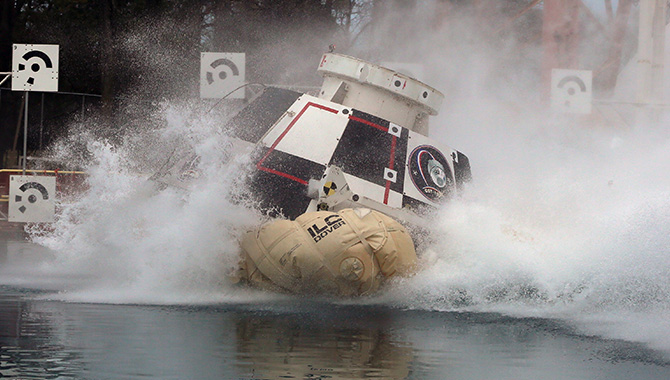
A recent report from the Government Accountability Office (GAO) examined the progress of NASA’s Commercial Crew Program (CCP).

A recent report from the Government Accountability Office (GAO) examined the progress of NASA’s Commercial Crew Program (CCP).
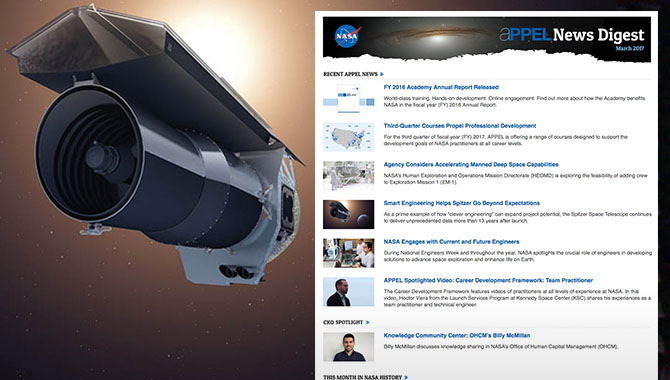
A new edition of the APPEL News Digest has been released. We invite you to read it today on our website.
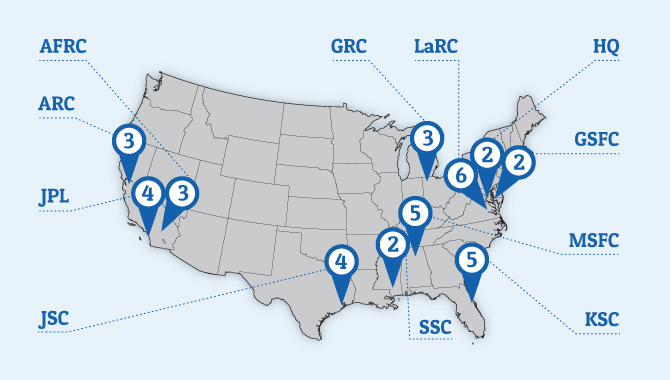
For the third quarter of fiscal year (FY) 2017, APPEL is offering a range of courses designed to support the development goals of NASA practitioners at all career levels.
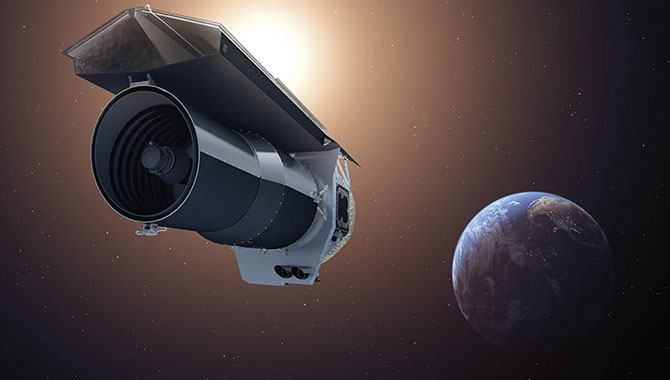
As a prime example of how “clever engineering” can expand project potential, the Spitzer Space Telescope continues to deliver unprecedented data more than 13 years after launch.
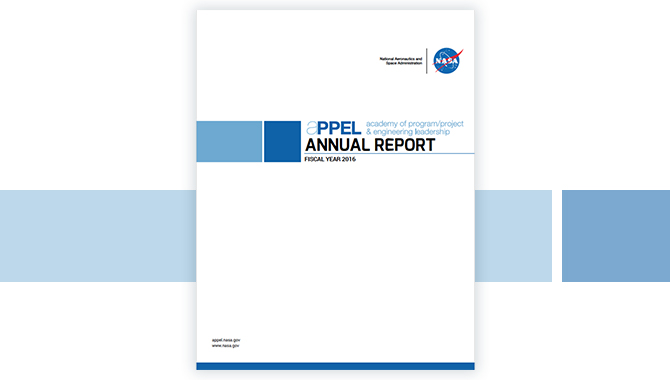
World-class training. Hands-on development. Online engagement. Find out more about how the Academy benefits NASA in the fiscal year (FY) 2016 Annual Report.
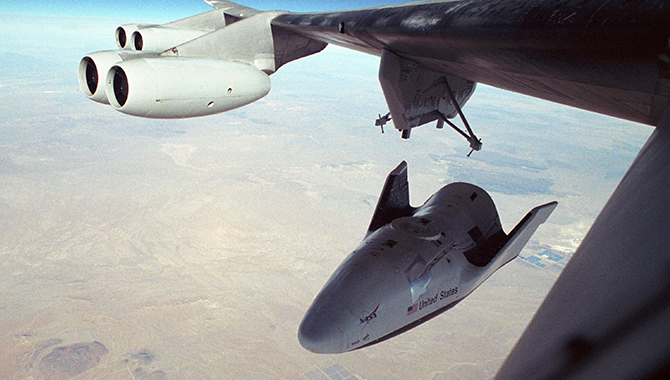
On March 12, 1998, the X-38—a novel prototype for a proposed International Space Station (ISS) Crew Return Vehicle (CRV)—flew for the first time.
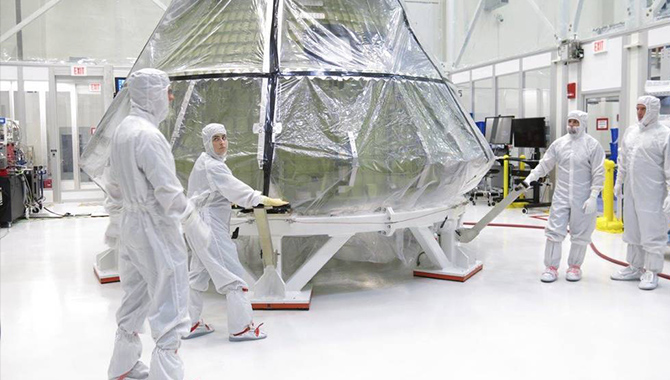
NASA’s Human Exploration and Operations Mission Directorate (HEOMD) is exploring the feasibility of adding crew to Exploration Mission 1 (EM-1).
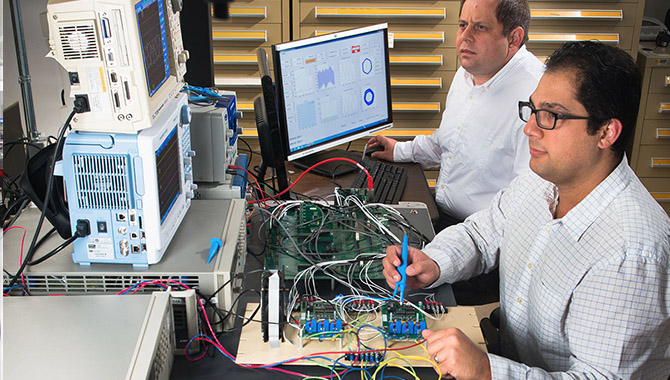
During National Engineers Week and throughout the year, NASA spotlights the crucial role of engineers in developing solutions to advance space exploration and enhance life on Earth.
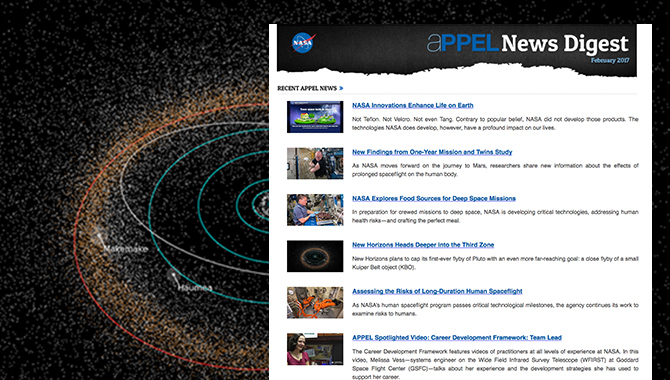
A new edition of the APPEL News Digest has been released. We invite you to read it today on our website.